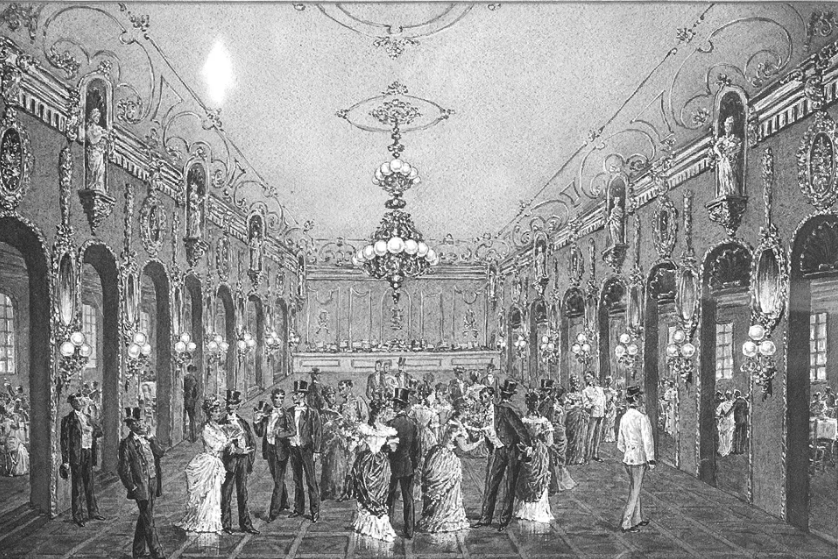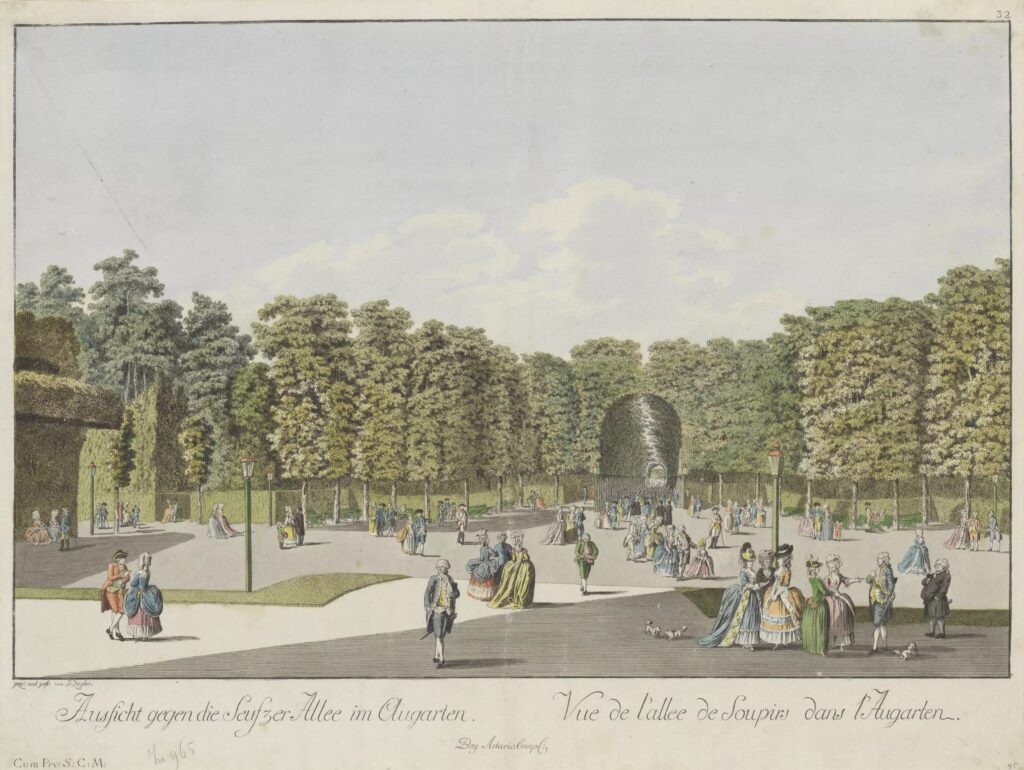Sperlsäle
In Biedermeier times, the pleasure of dancing also attracted the Viennese to the suburbs. Thus the
Sperlsaal in the then suburban Leopoldstadt became one of the most popular entertainment establishments. Here, elegant Vienna spins to the most lively waltzes. waltz sounds. Especially for Johann Strauss’s father, “der Sperl” became his favorite pub. And the first stage for a large number of his works. (German full text on ORF Topos)

Wagners Kaffeehaus
Wagner’s coffeehouse in the Prater (Hauptallee No. 9, formerly No. 18), also called the “Second Coffeehouse was very popular, especially because of the musical entertainment it offered. popularity. It was built around 1786 and in 1799 Franz Anton de Paula Gaheis described it as larger and more distinguished than the “First Coffee House” in the Prater. From 1802 Ignaz Wagner his daughter Antonie was a friend of Ferdinand Raimund. (German full text)
Kettenbrückensaal
Quite closely tied to Johann Strauss senior, this restaurant, which is one of the earlier entertainment venues of Vienna, was named after the first chain bridge urban infrastructure of the city. It opened for business on October 1 1825, three days before the opening of Vienna’s first chain bridge or Kettenbrücke (then named the Sophienbrücke, today: Rotundenbrücke) (German full text)
Dianasaal
The Diana Hall was built at the beginning of the century on the model of a Roman thermal bath and with a first-of its-kind iron roof structure. In 1840, it was transformed into the predominantly covered swim spa in Europe. For economic reasons, it was refitted and turned into a ballroom and concert hall, gaining prominence in the 1860s. (German full text)
Augarten
The Augarten (today: Obere Augartenstraße 1) – 52.2 hectares in size and one of the oldest and most most important baroque gardens in the city – was originally reserved for the imperial family as a hunting ground and recreation area. Joseph II made the 30.4.1775 the Augarten was opened to the general public. From this year dates the entrance portal, designed by Isidor Canevale, dates from this year. words can be read: “Place of amusement dedicated to all people by their cherisher.” (German full text)


